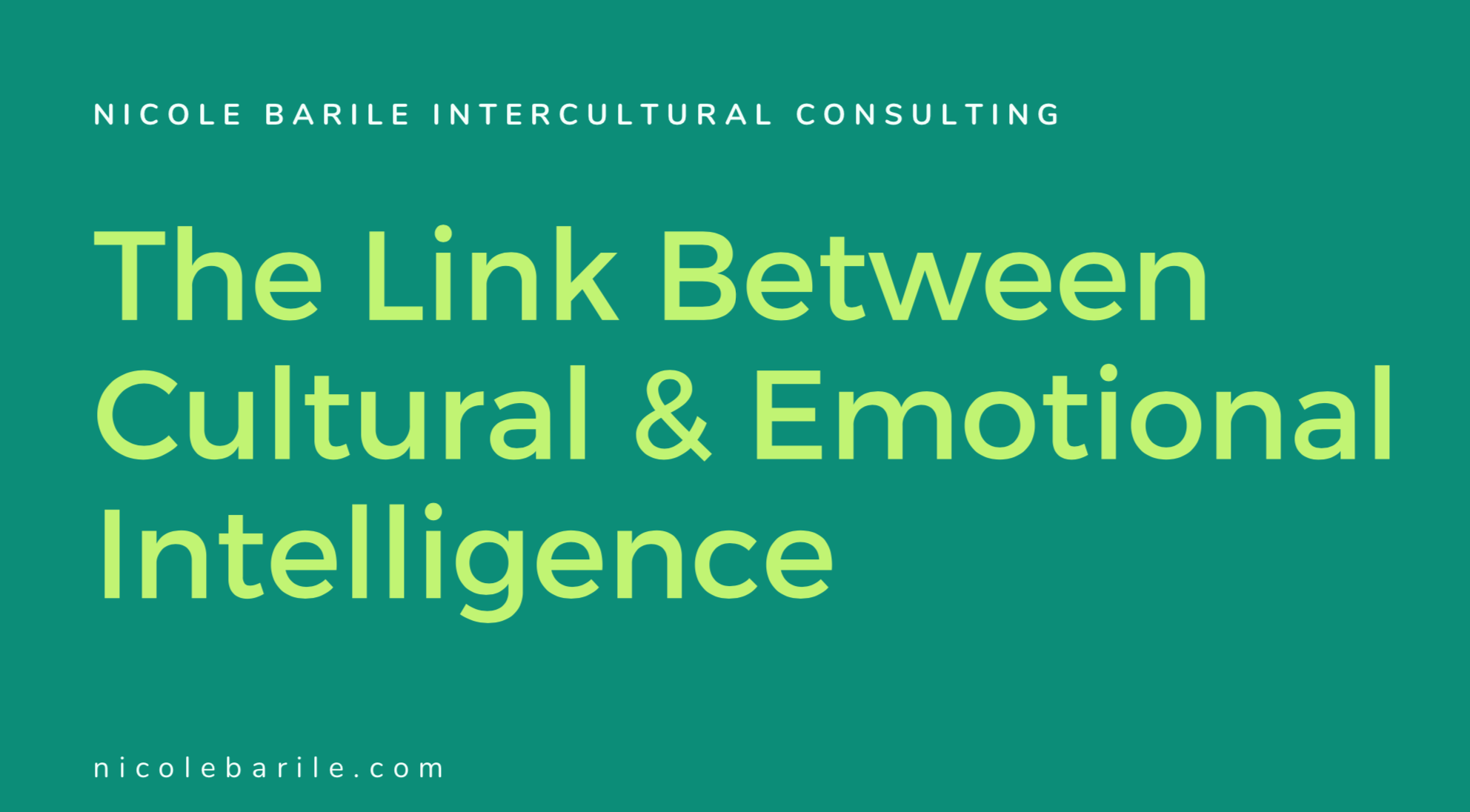There are many different definitions out there of both Emotional Intelligence (EQ) and Cultural Intelligence (CQ). I’ve picked these two for their simple and clear messages:
EQ is the ability to identify and manage your own emotions and the emotions of others.
CQ is the ability to relate to and communicate effectively with people from other cultures.
So what do EQ & CQ have in common, and how are they linked?
On a basic level, both are competencies that can be learned. Both aim to teach new skills and improve one’s interaction with others. Both offer assessments, coaching, and training to guide learners in the right direction. Here is a short list of some of the skills both EQ & CQ teach:
- Self-awareness
- Relationship management
- Comfort with ambiguity
- Mindfulness
- Reflection
- Empathy
But what is the underlying commonality running throughout both?
Communication.
At the heart of both EQ & CQ lies the ability to communicate with others. However, in order for successful communication and dialog to occur, you first need to be aware of yourself — whether that be your own emotions or your own culture. Really knowing yourself and your own communication style will give you deeper insights into how others perceive you and will, in turn, alter how you perceive others. As we all know, understanding has less to do with what is said or intended as it does in how the messaging is perceived. Perception influences everything, and in order to communicate effectively with others one must learn that…
“We do not see things as they are, we see things as we are.” — Anais Nin
What you perceive to be true may not be so. It’s very easy to misinterpret words, emotions, and body language, and learning how perception alters how we see the world, and others, is the first step in understanding communication.
So let’s say you learn all you can about perception and communication. You’ve learned how others think differently or relay information differently or how others show emotion. Now what? Now comes the hard part…
Change.
The main goal of both EQ & CQ is to teach skills that will allow you to communicate effectively with people who differ from you, and to do that, most likely you will need to change your behavior.
In the field of linguistics, code-switching is the ability to alternate between two or more languages in a single conversation. This is similar to what EQ and CQ aim to teach — the ability to switch communication styles based on your audience. For EQ that might mean managing your emotions for improved communication. For CQ that might mean changing your message delivery from direct to indirect based on what is appropriate in another culture. The long-term goal is to learn how to seamlessly alternate between differing communication styles without even thinking. Simple, huh?
Maybe not, but it’s worth a shot.
Learning to become fluent in multiple communication styles is not easy work, but if you’re willing to put in the time, you will most certainly reap the rewards… and so will those around you.


